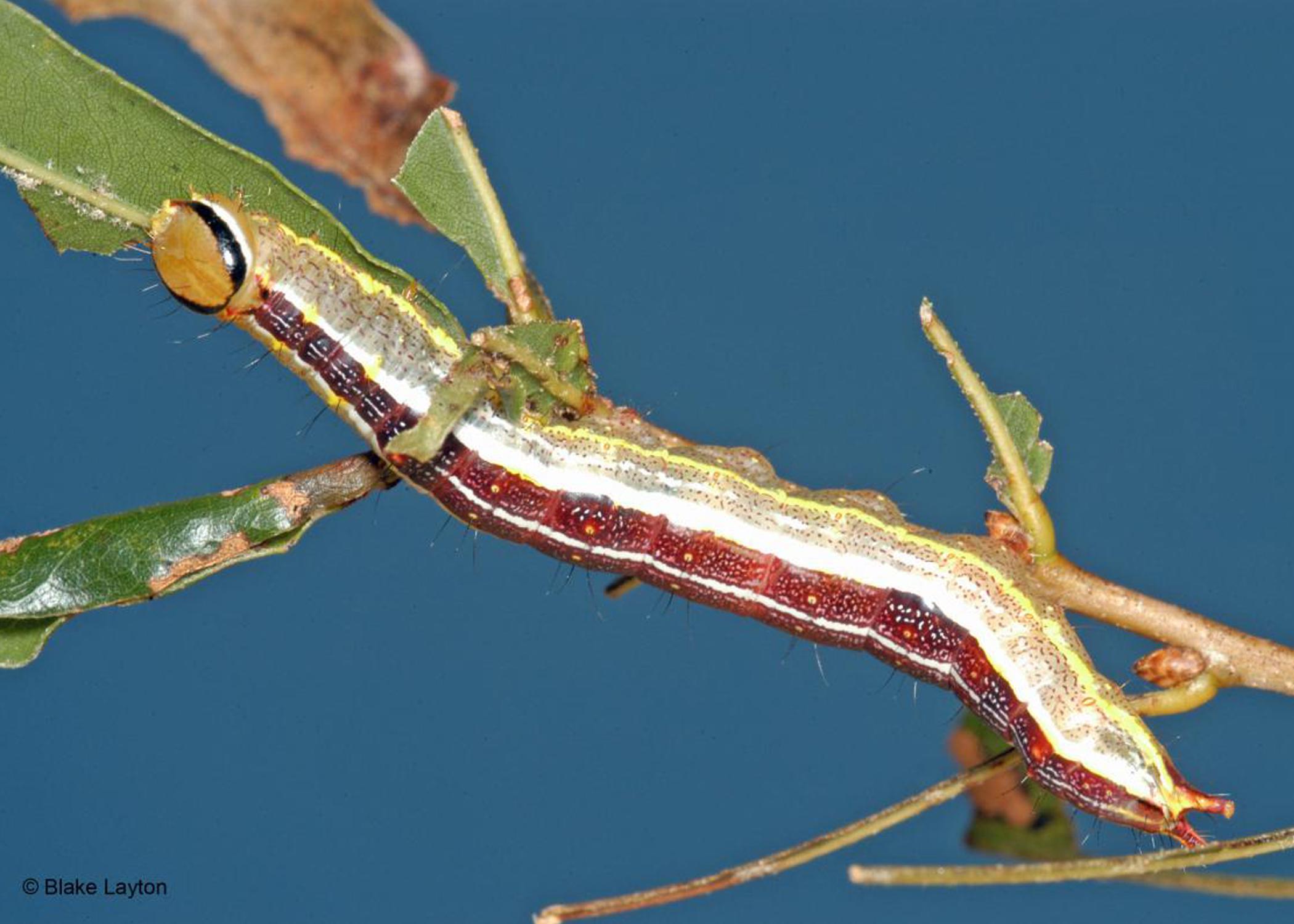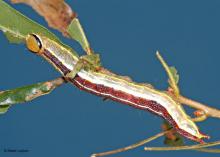Caterpillar, fungus affects drought-stressed trees
RAYMOND, Miss. -- The consequences of last year’s significant drought continue to appear in trees all over Mississippi.
Landowners in Central Mississippi have recently reported damage from variable oakleaf caterpillars and hypoxylon canker, according to the Mississippi Forestry Commission.
The combination of the caterpillars and hypoxylon canker has been observed affecting trees in towns including Raymond, Flora and Pocahantas. Variable oakleaf caterpillars favor oak trees but will also feed on other hardwood species. Hypoxylon canker is a fungus that can reduce growth and in severe cases kill trees. The fungus is always present in the environment and is spread by wind.
For drought-stressed trees, the double whammy can be a serious threat, but healthy trees will be able to withstand both pests, said Brady Self, a forestry specialist with the Mississippi State University Extension Service.
“In normal years, neither hypoxylon canker nor variable oakleaf caterpillar result in significant amounts of tree damage or mortality,” Self said. “However, last year’s drought added a stressor that both pests may exploit, and it is possible that the two may work in conjunction with one another causing a greater incidence of damage and mortality.
“Obviously, due to weather and various environmental factors, no one can predict the total amount of damage we may see this year,” he added. “But with proper monitoring and aid, residents can help relieve stress levels of infected or infested trees as the summer progresses by watering and avoiding soil compaction, mechanical injury or unintended exposure to herbicides.”
Self also noted that the caterpillars and fungus are not linked by anything other than their propensity to take advantage of stressed trees.
True to their name, variable oakleaf caterpillars vary in color. The dark markings, which look like sideburns, on the sides of the head can help distinguish them from other caterpillars. However, they can be confused with the double-lined prominent caterpillar, which looks similar and is in the same genus. Mature variable oakleaf caterpillars are about 1.5 inches long.
Kristy McAndrew, Extension forest health specialist, said variable oakleaf caterpillars can completely defoliate trees in some instances, especially older caterpillars, which leave only the very strong or thick veins of the leaf behind.
Mississippi typically gets two generations of this caterpillar in the state. One can be present as early as May. The second generation occurs in late summer and sometimes into fall near the Gulf Coast.
“Based on insect museum records and reports from naturalist sites like iNaturalist, this caterpillar is slightly more common in the central and southern parts of the state, so populations being higher in Central Mississippi could simply be because this insect is more common in the region,” McAndrew said. “Variable oakleaf caterpillar does outbreak periodically throughout its native range, which encompasses most of the eastern United States, but outbreaks are relatively rare and true causes for them are unknown.”
Drought leaves trees with a compromised ability to defend themselves against any kind of trauma, including damage from insects and disease.
“While virtually all of Mississippi experienced drought last year, the southern half of the state, especially the central and southwestern portion, seemed to get hit with the most severe drought,” McAndrew said. “With that in mind, the trees in this region were more drought-stressed relative to other regions in the state and therefore more predisposed to damage by variable oakleaf caterpillar.”
Mississippi may see another generation of this oakleaf caterpillar species later this summer and fall, but usually, only one generation contributes to an outbreak in the same year. But landowners and homeowners should be on the lookout for large numbers of these caterpillars next summer, McAndrew said.
“Hopefully, there shouldn’t be much opportunity for increased outbreaks or spreading this year,” she said. “However, outbreaks can occur two years in a row, so monitoring populations of these caterpillars next summer will be important. Outbreaks across multiple years typically overlap spatially to some extent but may shift. Unfortunately, we cannot predict whether a second year of the outbreak will occur or what direction it may shift if it does occur.”
She also urges people to monitor hypoxylon next year as well.
“Damage from the fungus can be more apparent in the height of summer, but initial infections may go unnoticed and cause more serious damage in following years when they are able to more substantially infect the host tree,” McAndrew said.
Several species of hypoxylon exist and infect different species or groups of species of trees. Hypoxylon atropunctatum is the species that affects oaks. While it may live on any oak, it only infects trees that are already injured or stressed. The fungus does not infect healthy trees or those that are already dead, Self said.
Visible signs of hypoxylon infection are thinning of the crown, followed by sections of bark sloughing from the trunk and branches.
“At this point, the tree is already decaying, and removal should be considered,” Self said. “There is no treatment for hypoxylon. The best option an owner has at their disposal is to always keep trees healthy. People should water during droughts and always avoid injuring trees through soil compaction, mechanical injury or unintended exposure to herbicides.”









